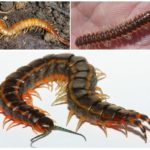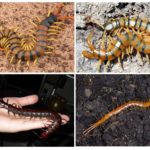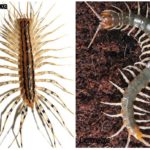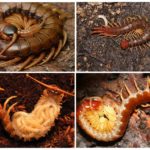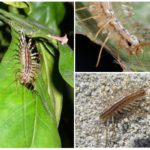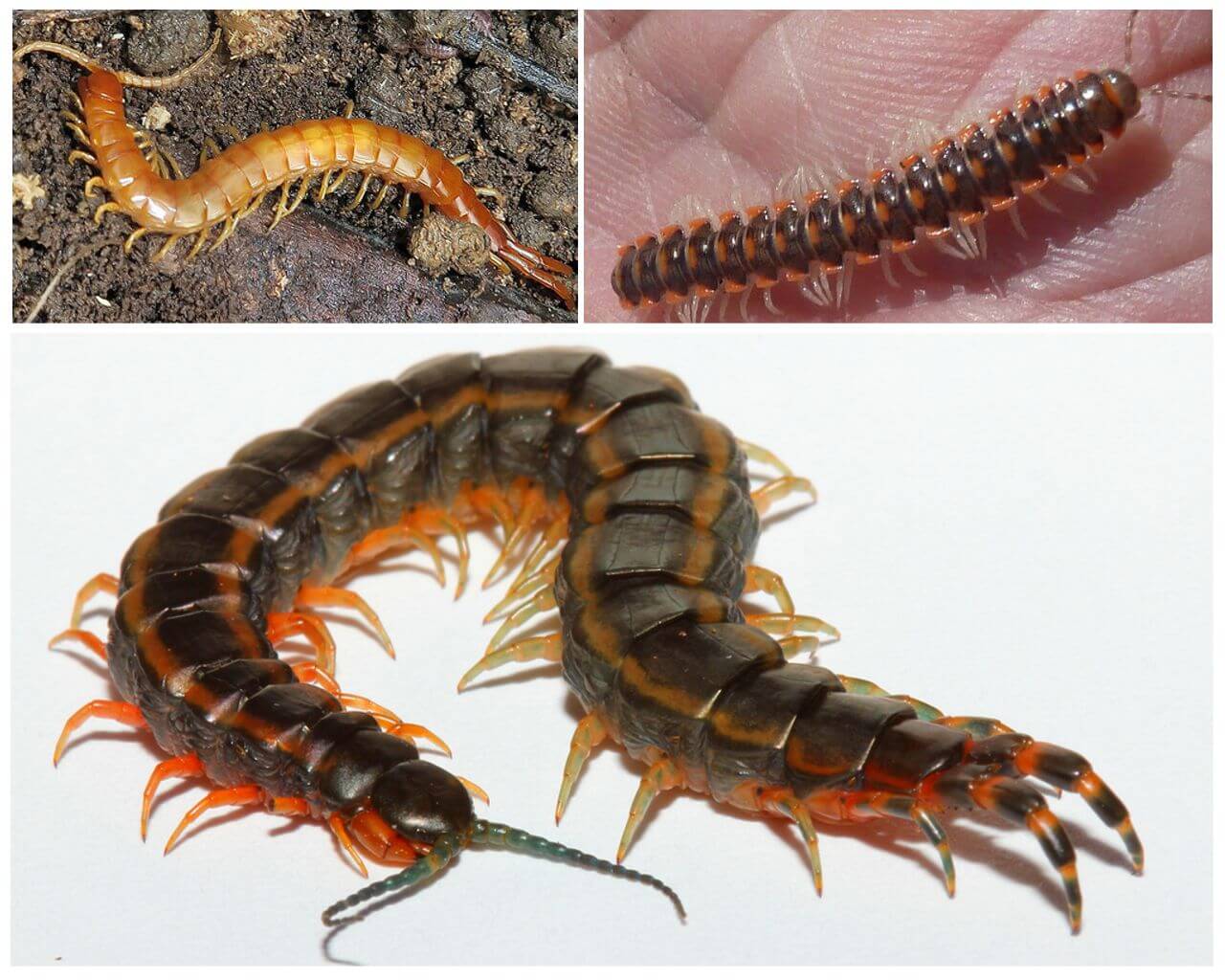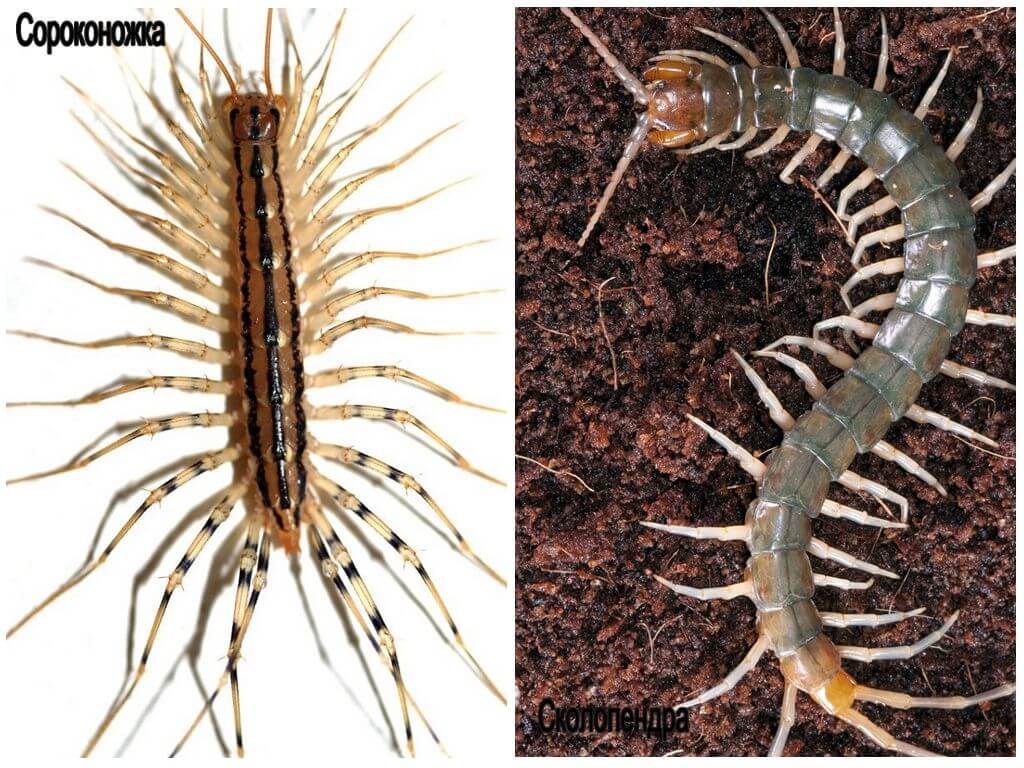Description and photo home skolopendry
Content
- Scolopendra
- Scolopendra Varieties
- Centipede and Scolopendra
- Reproduction scolopendr
- Scotigers
Nature is amazingly diverse. A huge number of bizarre, beautiful or terrible-looking animals and insects inhabit our planet. They need an ecosystem to maintain a certain balance in nature. The centipedes also play their own role. They belong to the genus of sandleggers, the group of skolopendry. Scolopendra is a predatory, poisonous insect that is not afraid of people, but prefers not to meet with them of free will. They may have different sizes.
Habitats
Description and photo skolopendry can see on the site. It is desirable to do this to people who are going to travel to warm or tropical countries. It is there that the centipede and the tropical skolopendra grow to gigantic sizes and present a real danger to humans. The length of their body reaches 26-30 cm. There are individuals and up to 45-50 cm. Therefore, the question of where the scolopendras live is of interest to humans. They can be found on the islands of Jamaica, Trinidad, in the north and west of South America.
On a note!
These centipedes are common in the tropics and subtropics, as they are thermophilic. There are about 600 species of Scolopendra and only a few species are found in Southern Europe, the Mediterranean, Transcaucasus, Central and Southern Asia, and the Far East.
Mostly, these scolopendras are found in the upper layers of the soil, under stones, lying logs, in crevices of rocks and other secluded corners, where humidity remains during the hot day and no one can disturb them. The natural question arises as to whether a poisonous centipede can be found in places with a colder climate and, if so, where this predatory insect lives in Russia. There are different types of insects, some of which live in the territory of the Russian Federation.
Varieties of predators
The typical representatives of this order of centipedes are ringed scolopendra, Californian, and scolopendra Lukas. But there are other species of these predators, which are their closest relatives.
- Californian. It is green in color and belongs to the giants, as its body size reaches 20 centimeters. It lives in arid regions of Mexico and the United States. Whether scolopendra is dangerous for a person in a normal state can be seen by observing a predator in wildlife. In a calm environment, the centipede poses no threat, but in case of danger, running numerous legs on the skin of a person causes inflammation at the place of contact. Only one death of a seven-year-old child in the Philippines from the bite of this poisonous scolopendra has been registered for the entire time.
- Ringed centipede. It is found in the Mediterranean countries, southern Europe, North Africa, in the southern region of Russia. It is widespread in the Crimea. The body length ranges from 14 to 17 centimeters. Scolopendra is painted in a beautiful golden yellow color, but also poisonous as its relatives.
- Vietnamese.This representative is distinguished by the release of glowing liquid, smelling of phosphorus, which strongly burns the skin and causes inflammation. The insect bite of Scolopendra subspinipes forms a wound up to 1.5 cm in diameter and 5 mm deep. The toxin is similar in effect to the poison of the viper. The wound is bleeding for a long time, as a special substance is injected with the poison, preventing the blood from clotting. There is an increase in temperature to 39-40 degrees and an increase in the bitten limb several times. The injured person urgently needs an anti-allergic agent and is taken to the nearest hospital.
- African Scolopendra. It can create hind noise and crackling with its hind legs to scare off enemies. The individuals themselves do not react to this sound.
- Blind venomous skolopendry cryptops (Cryptops) inhabit the upper layers of the soil. They, like moles, practically do not appear on the surface. These small scolopendra are yellow-brown in color, 3–4 cm long can be found in the steppe regions and in the garden plots even in Moscow latitudes. They are not dangerous because a weak jaw apparatus cannot bite through human skin.In the area of the tropics there are various types of these insects, which are painted in different colors, ranging from green to violet hues.
- Drugs (Lithobiomorpha) are small scolopendra relatives. They may accidentally get into the stomach with fruit or crawl to a sleeping person's nose, ear, but this happens very rarely. Mostly found in cities near wet foundations.
- The Scutigera flycatcher (Scutigera coleoptrata) has 15 pairs of long legs and long antennae. Scolopendra insect is nocturnal, but this species can be seen during the day on the wall of the house. Hunting for flies and other small insects. It tolerates dry air best of all species, although in the hottest part of the day it tries to hide in shelter. Scolopendra of this species can be active at lower temperatures, which gives it advantages in hunting over other insects. Today it is rarely found in the Crimea. Black Scolopendra also belongs to the class Scootiger.
Appearance
You can see what skolopendra looks like on colorful photos. It consists of a head and a long body, divided into 21 or 23 parts. Each segment has a pair of 2.5 cm light yellow legs with a pointed spike at the end. The poison gland is in each leg.
The back pair of legs is different from all the others by its large size and directionality back. This helps the centipede move well in the ground and stay in the right position during the hunt.
The insect is often called the centipede and skolopendra. But how scientifically correct it is, it is difficult for an uninformed person to understand this question. So what makes skolopendra different from a centipede - based on the name that is common among people, centipede has forty legs. But in reality, these insects are owners from 15 to 171 pairs of paws.
On a note!
Centipedes always have an odd number of pairs of legs, so centipedes are not found in real life. Predators run very fast, they can even jump, trying to hide from the enemy.
The head of the centipede is a plate with eyes, two antennae and front legs, which turned into maxillary, consisting of 6 parts. The extreme segment is a sharp claw, curved inward and connected to the canal of a poisonous gland. Through a hole in the claw, a toxin is released, which paralyzes the victim. There is a completely natural question about what scolopendra is dangerous for.After being bitten by a person, the poison causes severe pain, swelling, numbness and inflammation appear at the point of the bite. Pain persists from two hours to several days.
Reproduction and nutrition
The centipede is a predator and a good hunter. Therefore, it is clear what scolopendra feeds on. Like any predator, it eats small worms, larvae of beetles, flies, insects. Large individuals are able to attack small lizards, frogs, birds, mice, snakes and even bats.
Interesting!
Eating scolopendra for a long time, carefully digesting food and interrupting the meal several times during the entire process of absorbing food. Large prey for themselves can eat several days.
Scolopendra reproduces in the warm season. This period lasts from late spring to early summer. The male closes the entrance to his home with a spider web and lays a sperm bag called a spermatophore on it. Then the female crawls over this bag, grabbing it for fertilization of eggs. In the Crimea, there are colony females scolopendrthat breed without males by parthenogenetic.
The female exhibits maternal instinct, guarding the laid eggs for several weeks, clasping them with their feet. At this time, it emits substances that protect against the development of mold.After the appearance of young offspring, the female leaves. Scolopendra are born white and soft, then molt several times, darken and begin an independent life. Centipedes live for 1-2 years, large relatives can live up to 7 years, usually in captivity.
Scotigers
In Russia, there are centipedes that do not pose such a threat as tropical representatives. Home skolopendra living in a human dwelling, almost harmless. It even benefits by eating flies, moths, cockroaches, bedbugs, ants. Reaches a length of 2-6 cm. Bites skolopendra only for self-defense. Her jaws are very weak and cannot bite through human skin. But if it does happen, the predator bite is as painful as that of a bee.
Important!
In order not to get an infection from the millipede paws into the wound, the bite site should be treated with ammonia, manganese solution and an anti-allergic drug.
Ways to fight
Home Scolopendra, the photo of which can be viewed on the website, is inhabited by moist, warm, dark rooms with a sufficient amount of food, a suitable temperature. Get rid of her mechanically it is very difficult, since the flat form of the body and the shell reliably protect from external influence.
To combat homemade scolopendra, modern broad-spectrum insecticides are used, as well as folk remedies such as boric acid, cayenne hot pepper and the help of professionals. But the most important thing is to remove the reasons that caused the centipedes:
- get rid of mold and moisture in the house;
- to repair all the gaps in the windows, doors and floors;
- clean up the living space;
- bring out other insects.
Some lovers of the exotic want to have giant scolopendr houses. Those who wish to purchase such a pet need to know all the necessary information before venturing on such an act:
- how much is skolopendra;
- in what conditions to contain it;
- what precautions to follow;
- what to feed.
Then the owner and skolopendre will be comfortable and safe to coexist alongside.

